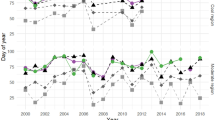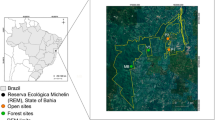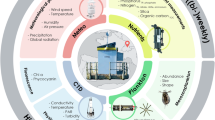Abstract
ROMANES, in his book on “Animal Intelligence”, suggests that frogs have a distinct idea of locality, and he also expresses the opinion that frogs are able to perceive moisture from a great distance. One of his correspondents found that frogs removed from their habitual haunts for 200 or 300 yards returned to them again and again. Romanes quotes Warden, who, in his “Account of the United States”, says that when a pond containing a number of frogs dried up, the animals made straight for the next water, though it was 8 kilometres away. During the spring of 1910 I made a series of experiments, which have been continued this year, withthe view of settling how newts are able to find their way back to water when they have once left it or have been removed from it. Working with the Palmate newt (Molge pálmata, Schneid.), I got no evidence of a faculty for the perception of moisture at a distance, and in order to explain the spring migrations of the newt it is unnecessary to presuppose its presence, because I certainly think there is a small homing faculty. My results directly point to this. Romanes gives no details, and more information onthis question would be welcomed before I draw up a full account of the experiments. The subject has an important bearing on the psychology of the Amphibia, and must form when elucidated an interesting chapter in their natural history; yet the reference in Romanes is the only one I can find.
This is a preview of subscription content, access via your institution
Access options
Subscribe to this journal
Receive 51 print issues and online access
$199.00 per year
only $3.90 per issue
Buy this article
- Purchase on SpringerLink
- Instant access to full article PDF
Prices may be subject to local taxes which are calculated during checkout
Similar content being viewed by others
Author information
Authors and Affiliations
Rights and permissions
About this article
Cite this article
CUMMINGS, B. Distant Orientation in the Amphibia. Nature 86, 448 (1911). https://doi.org/10.1038/086448a0
Issue date:
DOI: https://doi.org/10.1038/086448a0



